The magic of the Shanling M7 lies in its capability to enhance and enrich every aspect of the sound.
Shanling has an extensive history of making DAPs. The past flagship, the M8, was highly appreciated by audiophiles worldwide. Then they outdid themselves with the current flagship M9 with the ES9038PRO chipset, a significantly more powerful CPU, Android 10, and more memory – packed into an aluminum body with a new ‘wave’ design.
Next, Shanling squeezed all of the above features into a smaller body, and the M7 was born! A powerhouse on paper, it showcases TOTL technology and engineering prowess for under USD$1300.
- Deep and articulated bass
- Highly transparent midrange
- Brilliant and breathtaking treble
- Crisp and very tangible notes
- Expansive and spacious soundstage
- Outstanding separation and imaging
- Scintillating and musical presentation
- The short delay in playback needs to be addressed
- Over 10 hours of playback in balanced output would have been highly appreciated
I used the quite popular M0 extensively. The M3X became my next portable source of music for almost a year. Familiar with Shanling’s tuning philosophy and house sound, I was excited to try the M7.
Technical Specifications
- Form: DAP
- Display: 5-Inch 1920 * 1080
- Operating System: Open Android 10
- CPU: Qualcomm Snapdragon 665
- Memory: Ram 6GB, ROM 128GB + single Micro SD card slot
- Hi-Res Support: 32/768 & DSD512 & MQA 16X
- Bluetooth: Bluetooth 5.0, two-way, LDAC, LHDC, aptX HD, aptX, SBC Support
- WiFi: 2.4G/5G, supporting DLNA, Airplay
- DAC: ESS ES9038PRO
- Amplifier: ADA4896-2 + MUSES8920 + OPA2211 + BUF634
- Output Power: Single-ended 400 mW@32Ohm / 900mW@32Ohm Balanced
- Output: 3.5mm single-ended and 4.4mm balanced
- Output Impedance: Less than 1 Ohm
- Battery: 7000 mAh, supporting 18W quick charging
- Battery Life: Up to 10 hours in single ended and 8.5 hours in balanced
- Dimensions: 129 x 78 x 20 mm
- Weight: 312g
Packaging
The box is rather big, but the size feels justified considering how nicely things are arranged. The semi-shiny copper outer shell and inner brown pleather box offer a lovely vintage vibe. It opens like a book, revealing the neatly packed player and accessories in adjacent compartments.
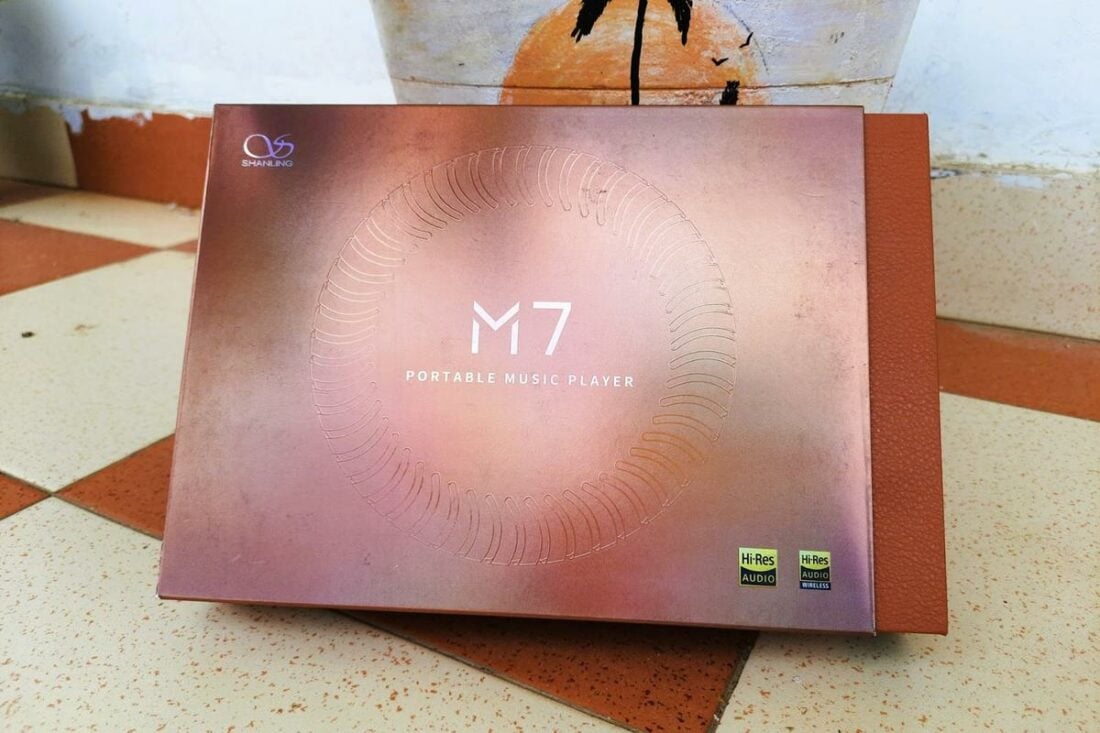
In the box
- Shanling M7 DAP
- One spare screen protector
- Alcohol wipes
- USB C – USB A charging cable
- Spare O-rings
- Quick start guide
- Warranty card
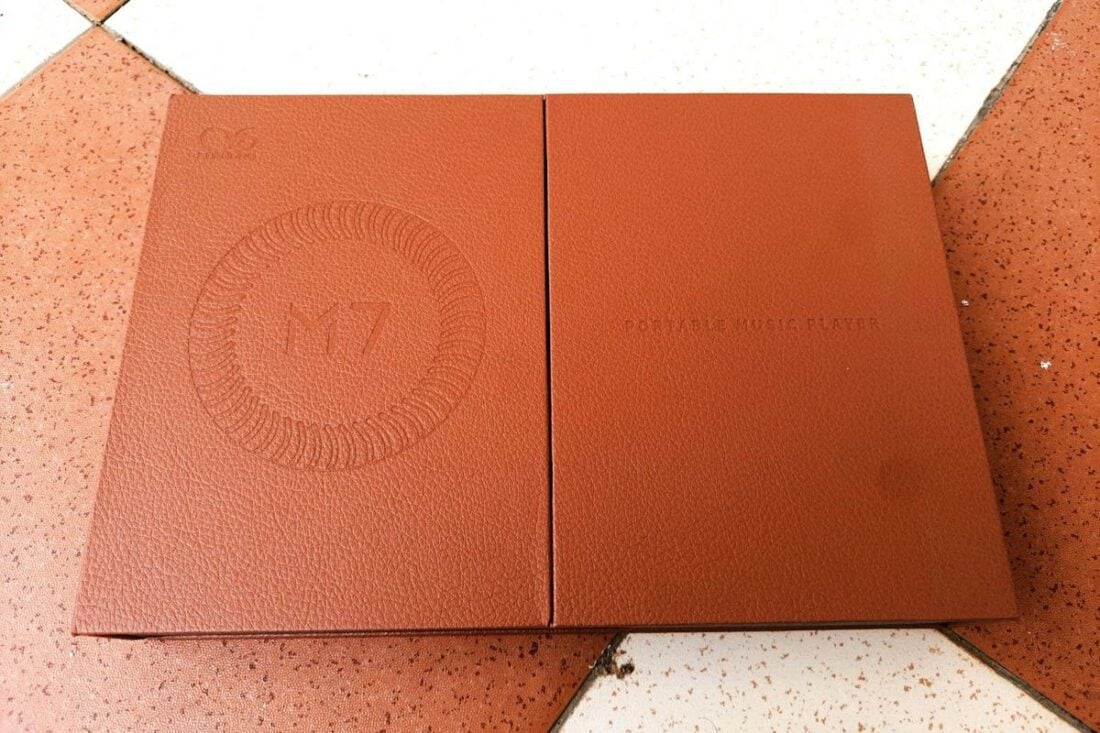
The O-rings were a surprising addition, and it took me some time to figure out their purpose. They create a seal on the inside of the MicroSD card slot cover. Thoughtful of them to include extras since they would be difficult to replace if lost.
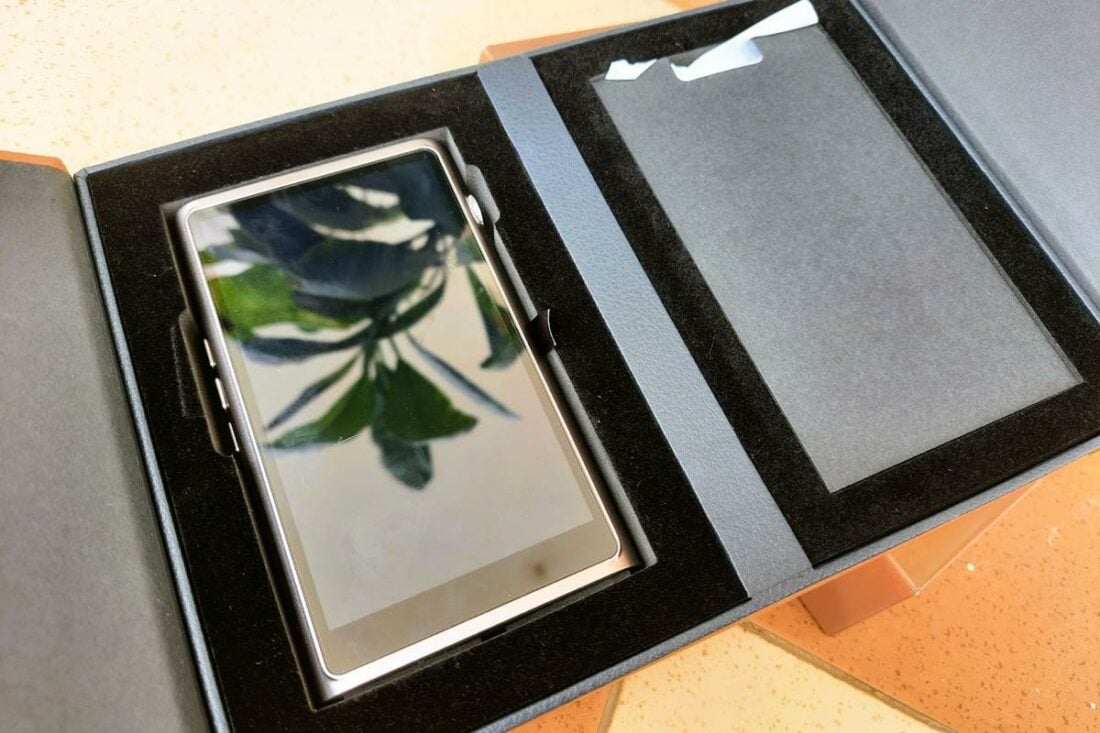
One screen protector comes pre-applied already.
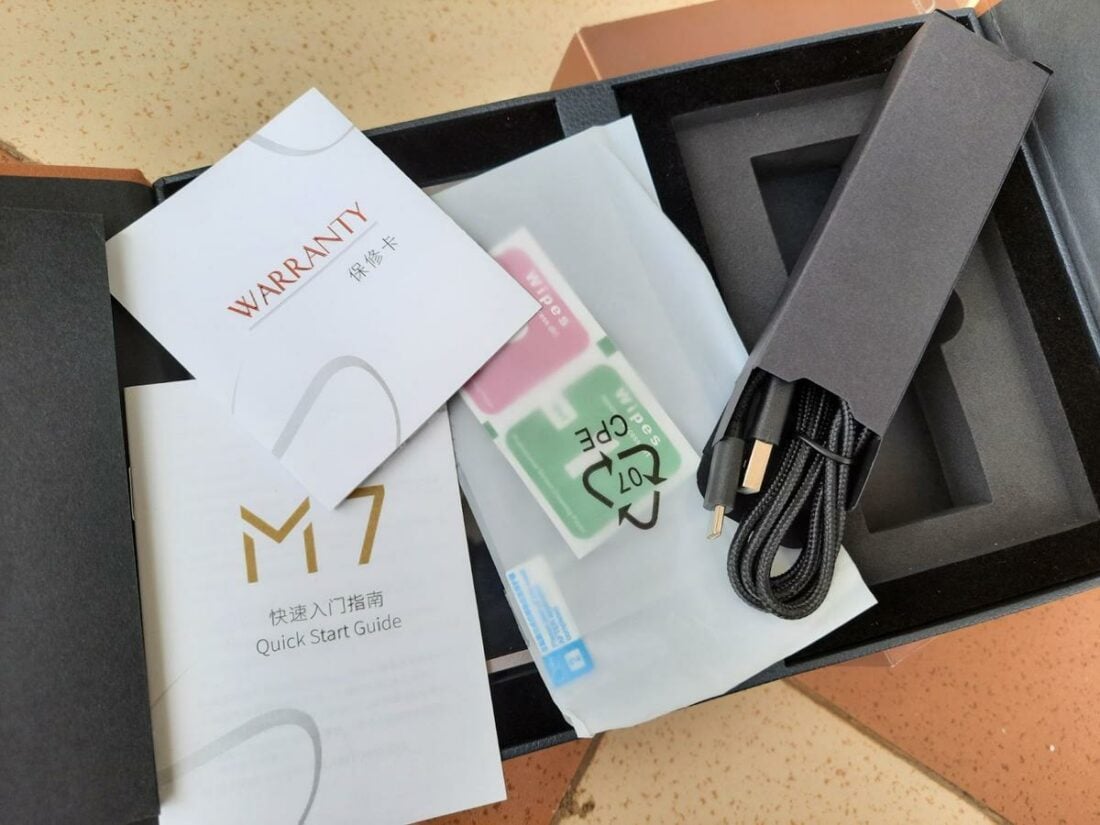
No protective case is included. Pleather cases are sold separately.
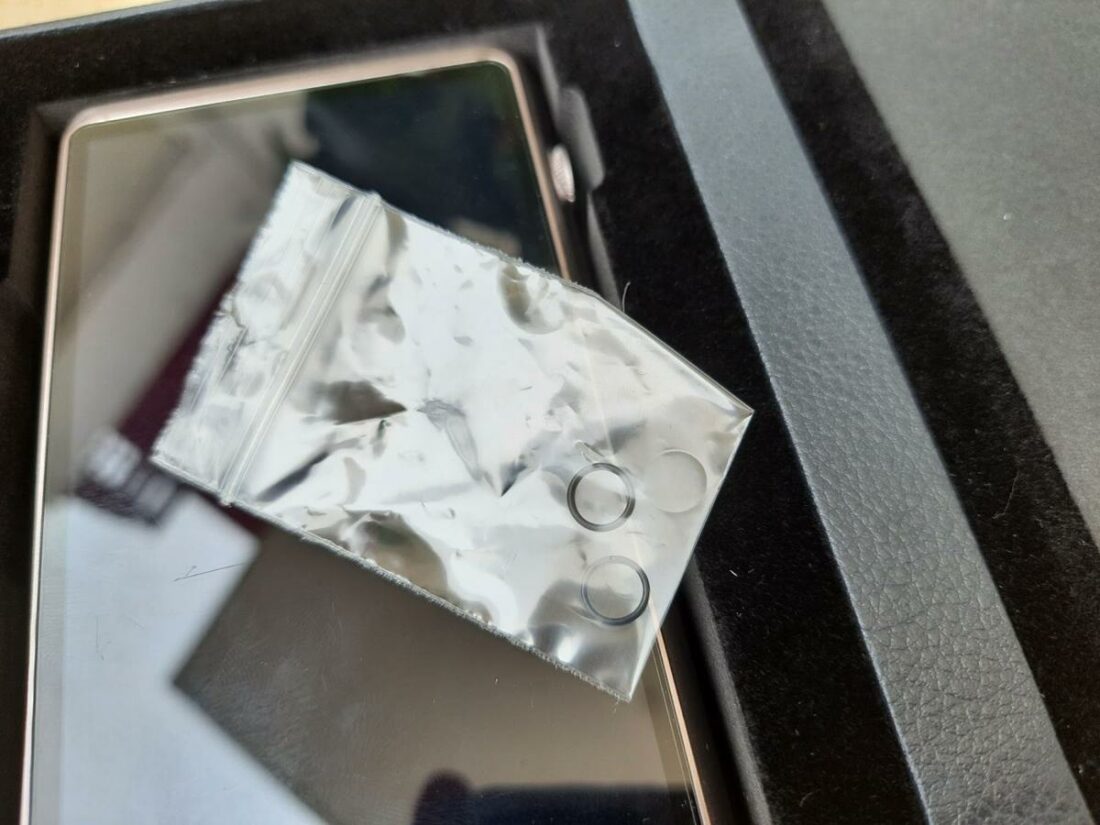
Design
The M7 is elegant and classy. The titanium grey satin chassis has a certain air of sophistication. There are no uneven edges or mismatched joints – proof of the precise CNC machining used to create the chassis from a single aluminum block.
Each DAP has a signature look that makes it easily distinguishable from others, and the M7 shares a complex wave pattern on the side with the M9. Add to that the glass panels in the front, back, and top of the player; the whole presentation is worth its price tag.
The 5-inch LCD from Sharp has vivid colors and a decent viewing angle. The display is fitted into a ‘floating screen’ design of the front panel, lifting the display a tiny bit from the main body, for a better user experience. The 1920×1080 resolution is relatively high definition as well.
Output sockets are on the top, 4.4mm on the left, and 3.5mm on the right. The type-c charging/data port and MicroSD card slot are on the bottom.
The top right corner has the iconic rotary potentiometer volume/power knob, and the left side has the three physical buttons for play/pause, forward, and reverse, along with a tiny led light. The volume/power knob rotates and clicks smoothly.
The playback buttons could do with more space for easier access.
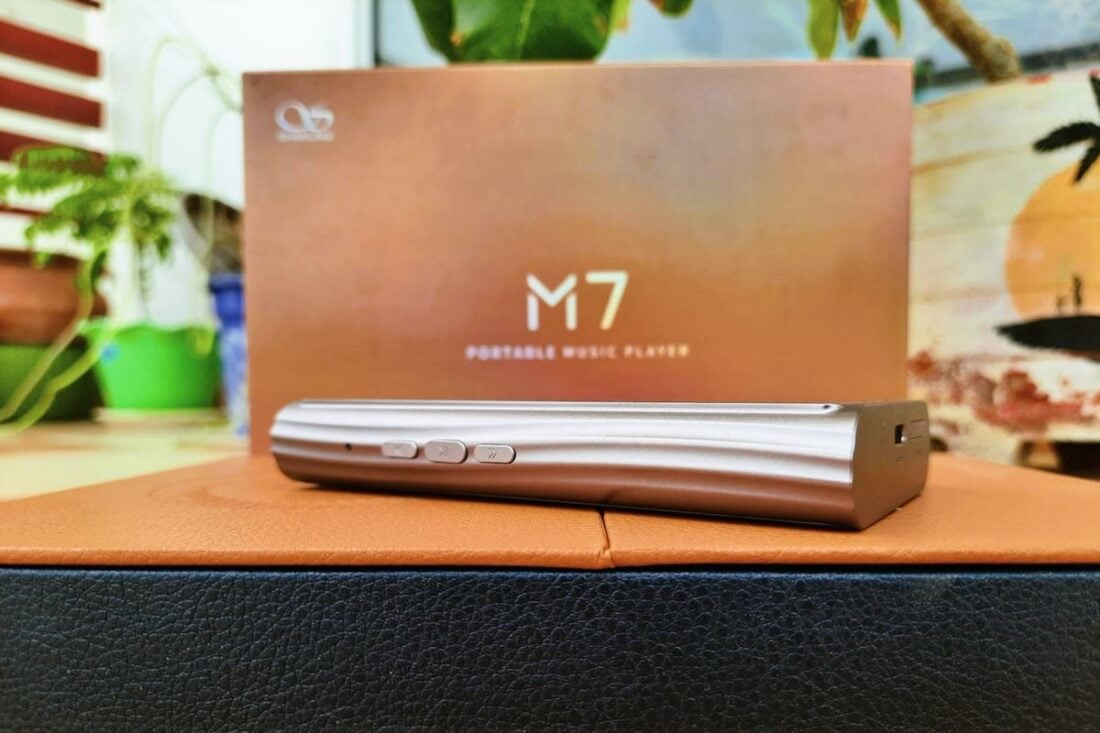
Internals
Similar to the flagship M9, the M7 uses the ES9038PRO flagship DAC chip in current-mode operation. Shanling has also employed a matching ESS ES9311 voltage regulator and their in-house developed I/V conversion stage & CPAF (Constant Phase in All Frequencies) to get the best performance.
There is an array of different amplifiers – ADA4896-2, MUSES8920, OPA2211, and BUF634, to optimize the I/V conversion stage efficiently, reduce noise, crosstalk, and distortion, and to increase power and current output.
Maximum power output is capped at 400 mW @32Ohm via 3.5mm single-ended output and 900 mW @32Ohm via 4.4mm balanced output.
These impressive features consume a lot of power. To handle that, Shanling has put a massive 7000mah battery inside. It offers a maximum of 10 hours of playback via 3.5mm single-ended output, 8.5 hours of playback via balanced output, and 85 hours via Bluetooth. Quick Charge (QC3.0) 18W charging is supported.
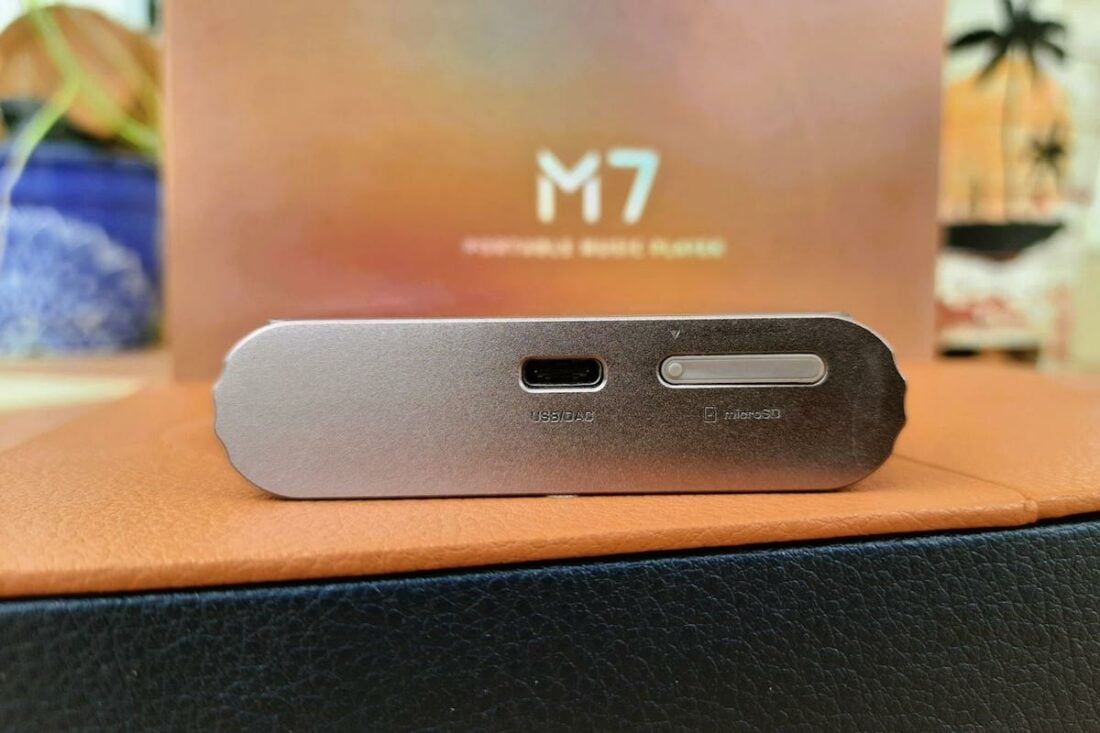
Software and features
M7 runs on Android 10, powered by a Qualcomm Snapdragon 665, 6 GB RAM, and 128 GB of internal memory.
There are two modes of operation – Prime mode and Android mode. The Prime mode makes it essentially a simple music player minus the Android navigation features. Shanling music player becomes the stock music player. The notification bar and all its options are still accessible in this mode.
The Shanling Music app comes installed, and other music apps can be installed from the Google Play store. I prefer multiple music playback apps with different types of albums on cue – to suit my active and resting moods.
Being an Android DAP has the obvious advantage of streaming support – Apple Music HD, Spotify, TIDAL, etc.
The Shanling M7 has a slight caveat with playback – once you press the play button, it takes almost a second to hear the music, regardless of the app used.[/note]
Since there is no separate line-out port, the 3.5 mm single end and 4.4 mm balanced ports serve as both headphone-out and line-out. You can easily change this setting from the notification bar.
Three gain settings are available (Low, Mid, and High) and also selectable from the notification bar. I usually keep it at Mid gain for optimum performance.
The M7 has bi-directional Bluetooth 5.0 and supports all high-definition Bluetooth audio codecs.
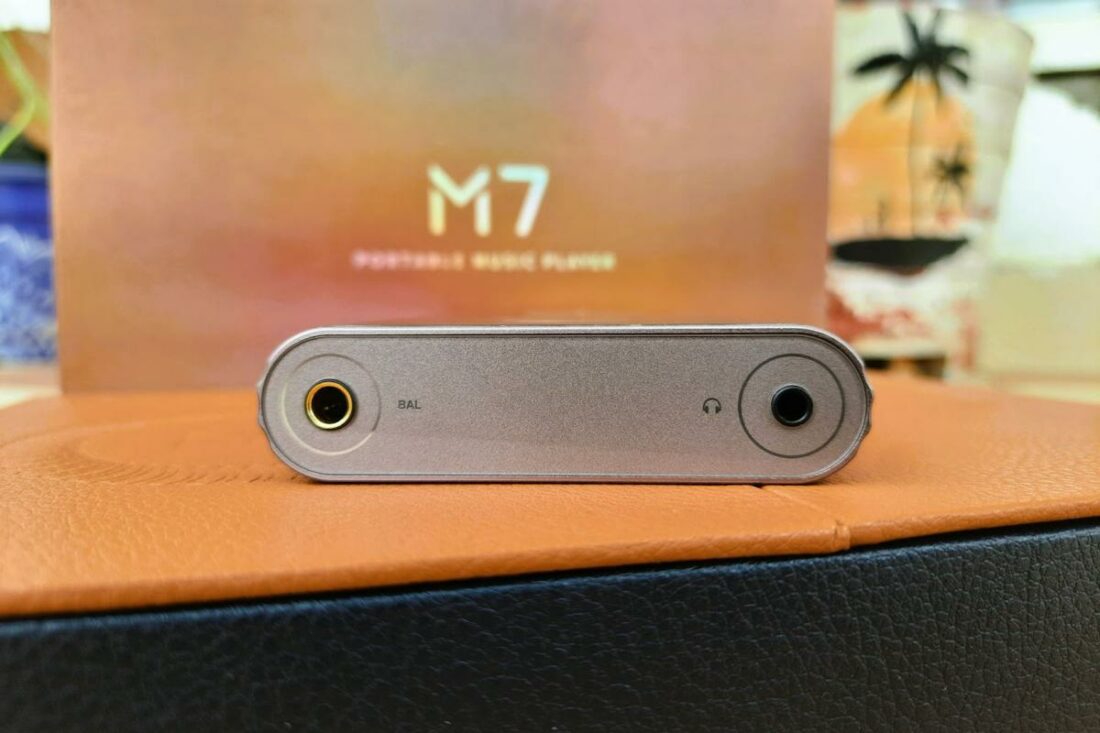
M7 Sound
The M7 is not a one-trick pony. It does not just increase the bass, thicken the midrange, or brighten the sound. Instead, it enhances the whole sound output in every possible way to provide a markedly refined experience.
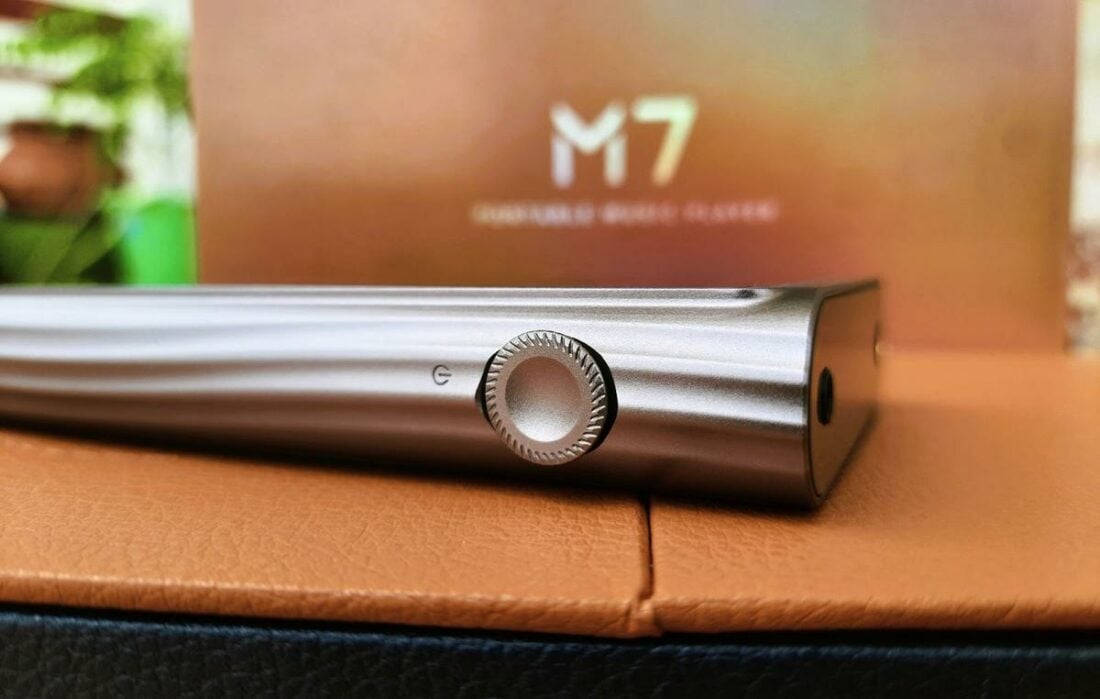
Bass
Bass extends deep, is tight, and slams nicely with a highly defined edge.
Subbass is not lean; extension is preserved, and textures are highlighted. The notes are well-defined and tightened to sound tactile and detailed. Any boominess is immediately under control. The bassline in Massive Attack – Angel and the bass guitar riff in RATM – Bullet In The Head display these traits splendidly.
Midbass hits are similarly tight, with good texture, and produce a realistic slam. The light kickdrums in Metallica – The Four Horsemen are clearly reproduced but not pushed forward. While tight, they still sound full-bodied and not lean. The powerful bass drums in Battlestar Galactica Season 2 OST – Prelude To War sound wonderfully thunderous but not invasive.
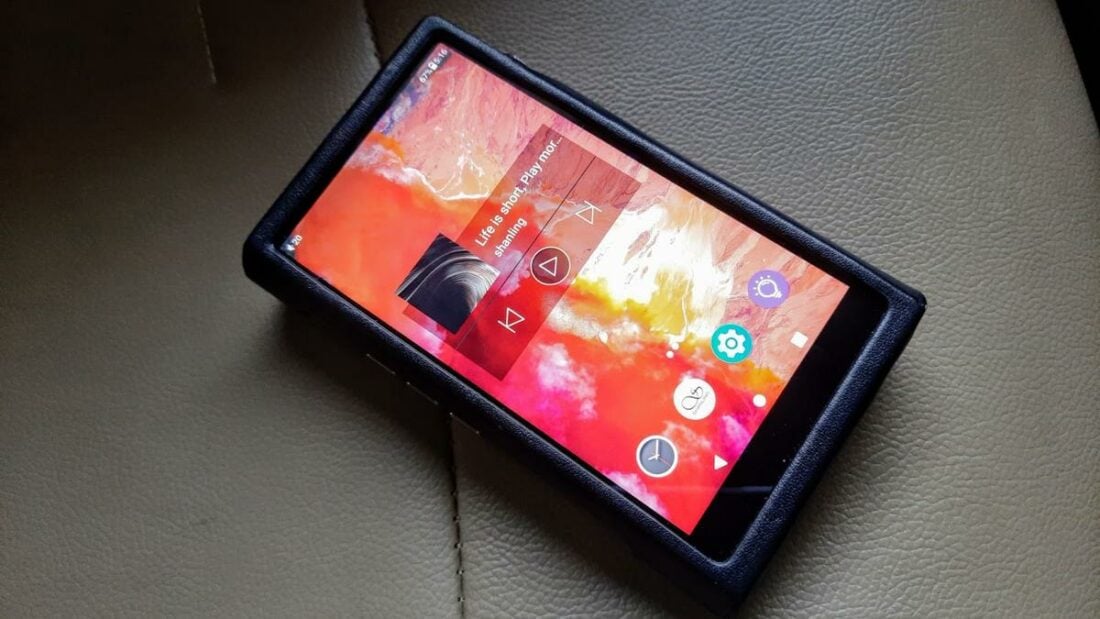
Midrange
Midrange has added transparency, and tonality leans towards neutrality. The edges of the notes are slightly sharp but evenly defined.
The clarity in the midrange is turned up a few notches to sound noticeably transparent. There is no addition or reduction of warmth, but the overall midrange sounds mature and premium. The secret lies in how carefully each note is precisely defined, sounding alive and dynamic.
String instruments have a nice crunch. The acoustic guitar in Estas Tonne – Strings of A Bard sounds highly textured and never blurry. The electric guitar riff in Ozzy Osbourne – Crazy Train has enhanced edges but does not sound metallic.
Male vocals have a slightly enhanced weight making them sound organic, despite not having any added body or thickness. The M7 manages to make the gritty vocals in Aerosmith – Same Old Song And Dance sound actually musical and not harsh. The same applies to the wonderful baritone voice of Leonard Cohen in Hallelujah.
Female vocals soar high with the pure energy M7 injects them with. Whitney Houston sounds absolutely captivating in I Will Always Love You. Amy Lee’s powerful voice in Hello sounds full of emotion. Sara Bareilles’s voice sounds very dynamic and thrilling in Love Song.
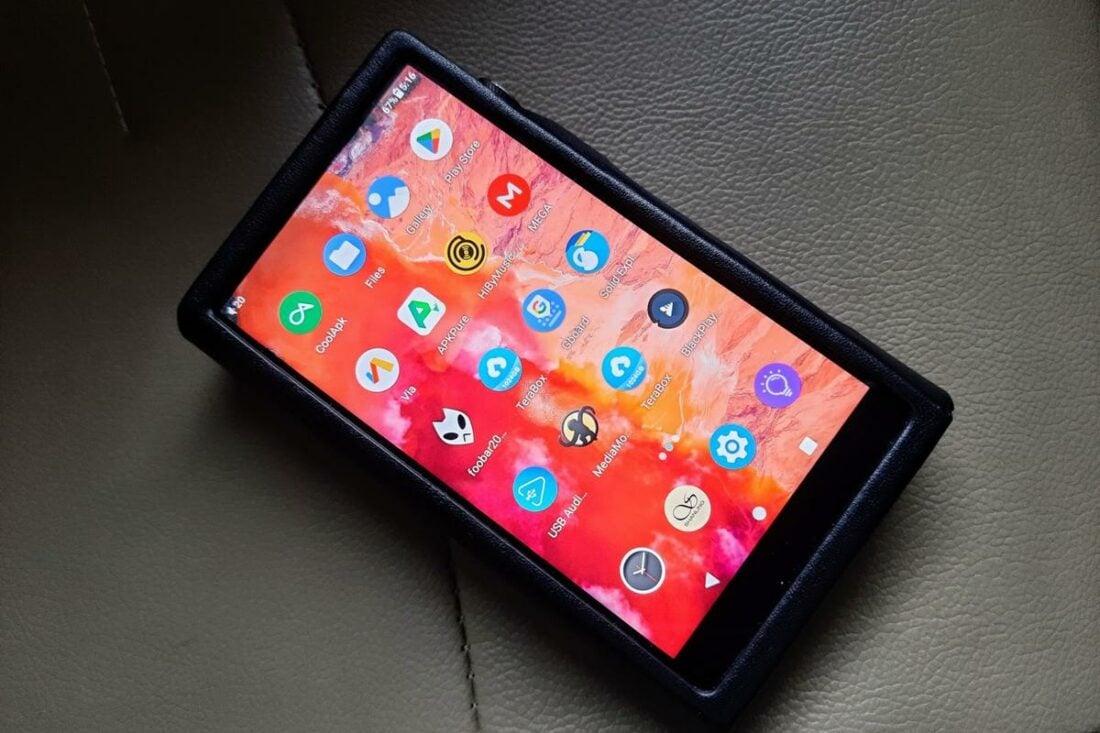
Treble
Ethereal, extended, airy, and brilliant treble. No compromises, no cheap thrills.
The finesse of the tuning of the M7 takes the treble to an ethereal level by augmenting it with a careful dose of brilliance. The brightness and texture are immediately perceivable, as is the absence of undue peaks. The notes here get a very definite edge as well.
The prominent cymbal roll in Metallica – Enter Sandman and the occasional cymbal crash sound brilliant but not uncomfortable. The different types of cymbals sound unique and present in Max Roach – Lonesome Lover.
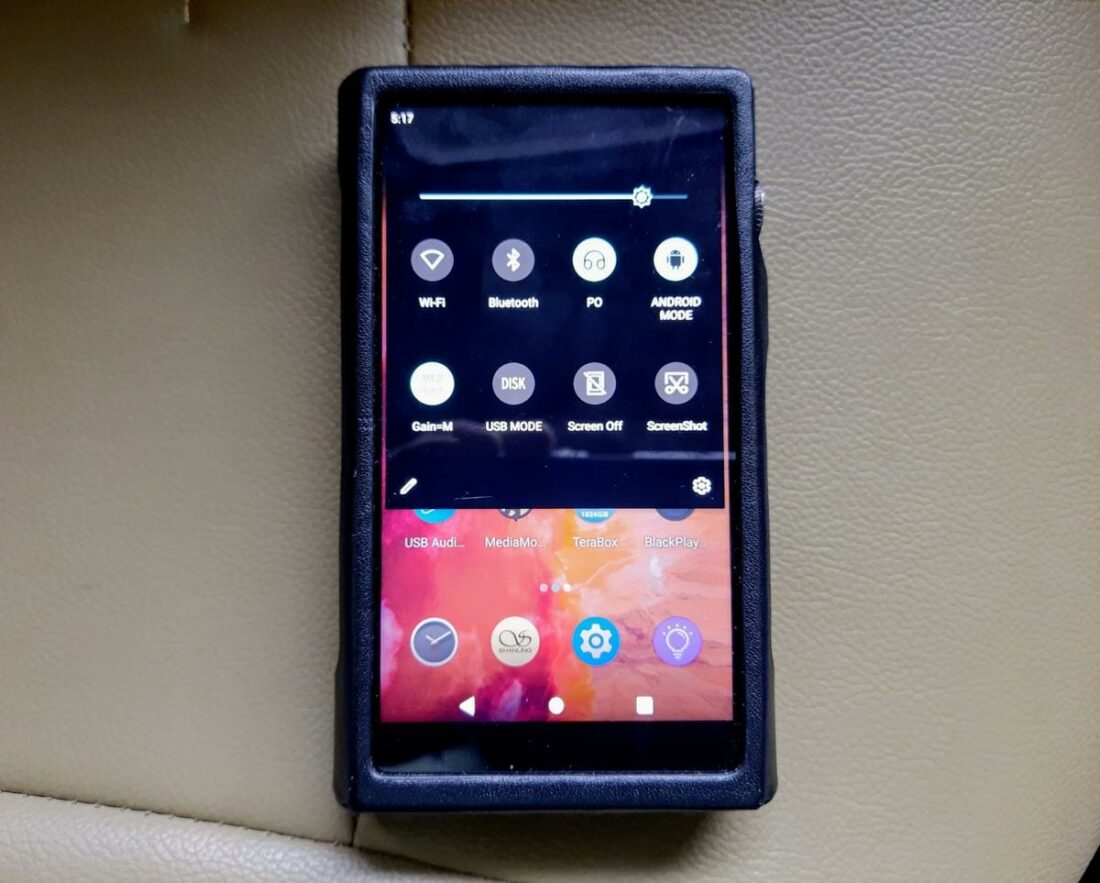
Soundstage, imaging, and details
The M7 excels in portraying a massive soundstage, superbly wide and deep, with decent height. The background is clean, with a nice overall contrast. The imaging is sharply defined as well. And if it has not already been made obvious, eking out hidden details is one of the M7’s signature specialties – nothing left to be desired in this area.
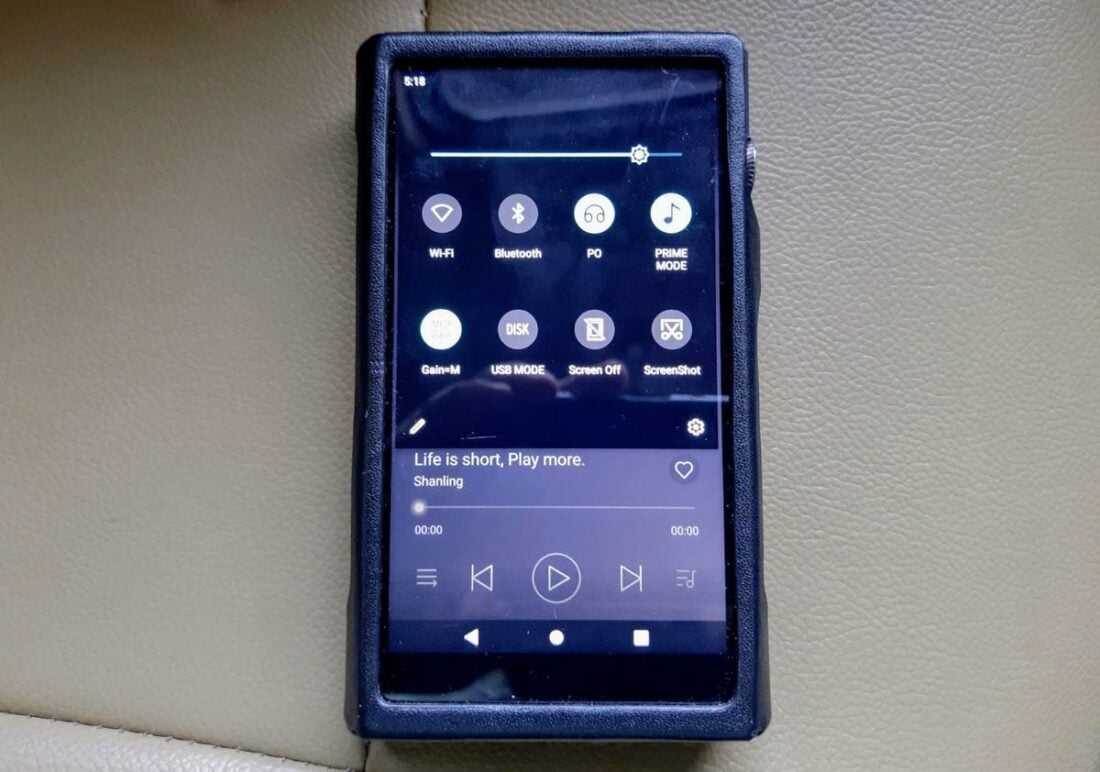
Pairing
The FAudio Dark Sky have a very vivid presentation with a pronounced upper midrange and treble. The M7 makes them better textured and more vivid but takes care of the peaks.
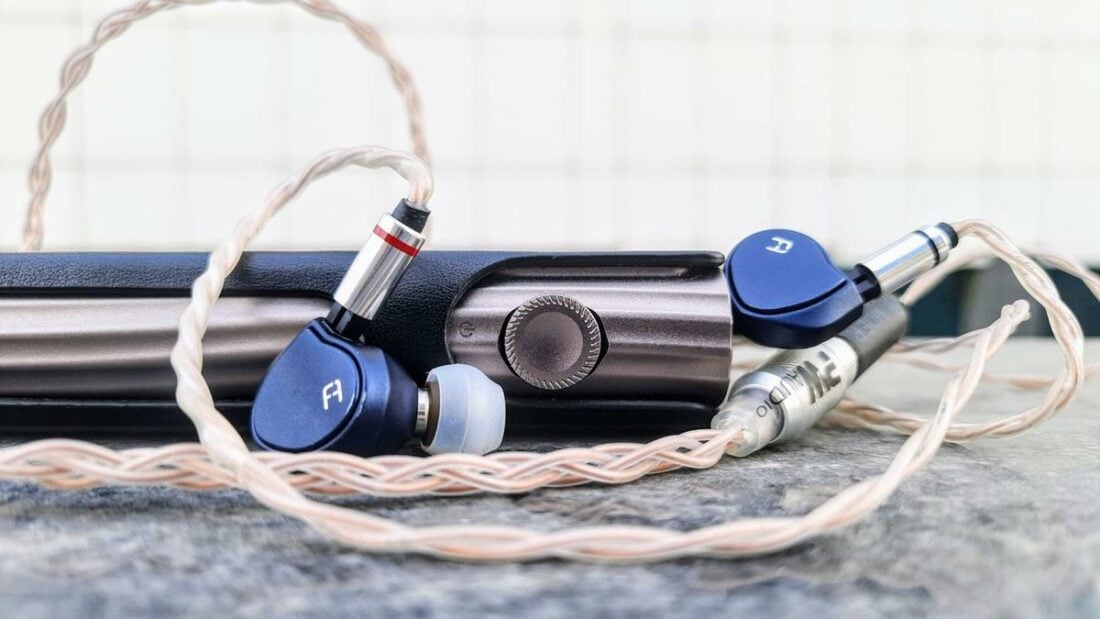
The 634EARS LOAK-T(CL) have a somewhat restrained bass response and brilliant upper mid and treble that might come off as shouty to some ears. Paired with the M7, the unrefined shoutiness gets controlled and details become more easily perceivable.
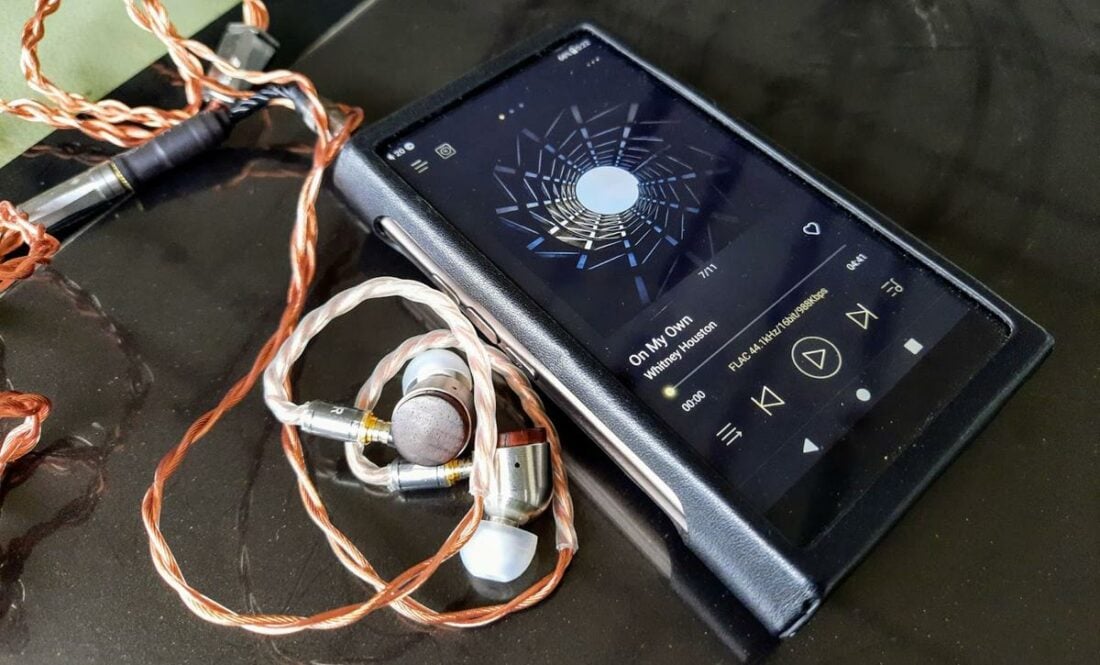
IMR Dark Matter are a pair of IEMs specializing in delivering oodles and oodles of bass. The M7 tightens this region to clear up the stage, making the upper treble shimmer more noticeable.
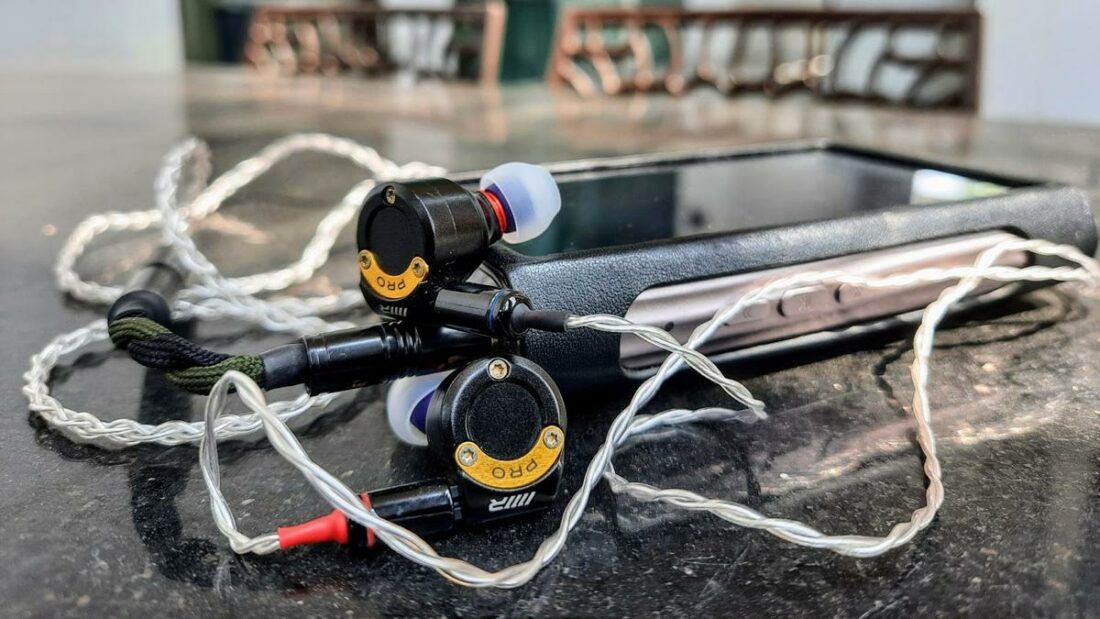
The TGXear SS Bell Serratus earbuds are an enigma; such incredible quality sub-bass extension and an unprecedented vigorous and vibrant sound profile. The M7 makes every aspect of them even more mature – a pairing creating the best of both worlds!
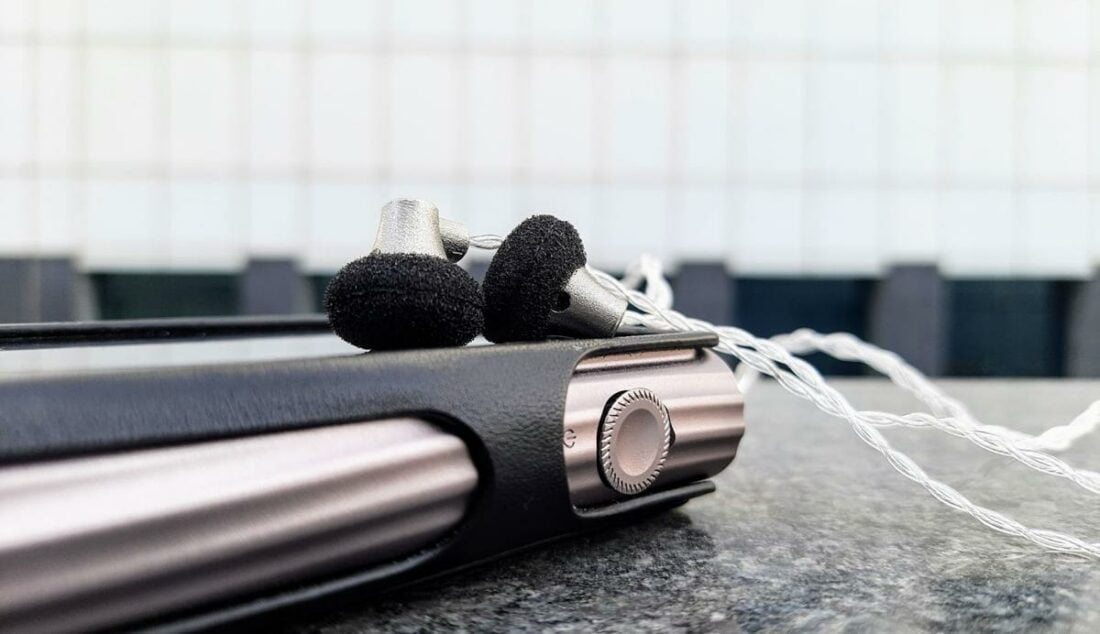
Where to Buy
Conclusion
The Shanling M7 makes my jaw drop. Initially, I was unconvinced that a source could have such a massive influence on the final sound to justify the price. But after the M7, I am a believer.
With other sources, I can detect that they all have a specific area of expertise – some extend bass, some energize the treble, and some make the mids more organic.
The M7 is an exception. It takes care of the whole spectrum equally and with extreme finesse. The bass, midrange, treble, stage, and separation – all of them become more articulate.
The M7 is a TOTL DAP, not just in sonic performance but also in ease of use. Very smooth and easy to operate, with options at the touch of a fingertip. No bloatware, just the needed features performing at their best. I never felt an iota of irritation while navigating, although the playback delay could be improved.
Shanling has created a DAP that will have its position in its price range unchallenged for years to come.
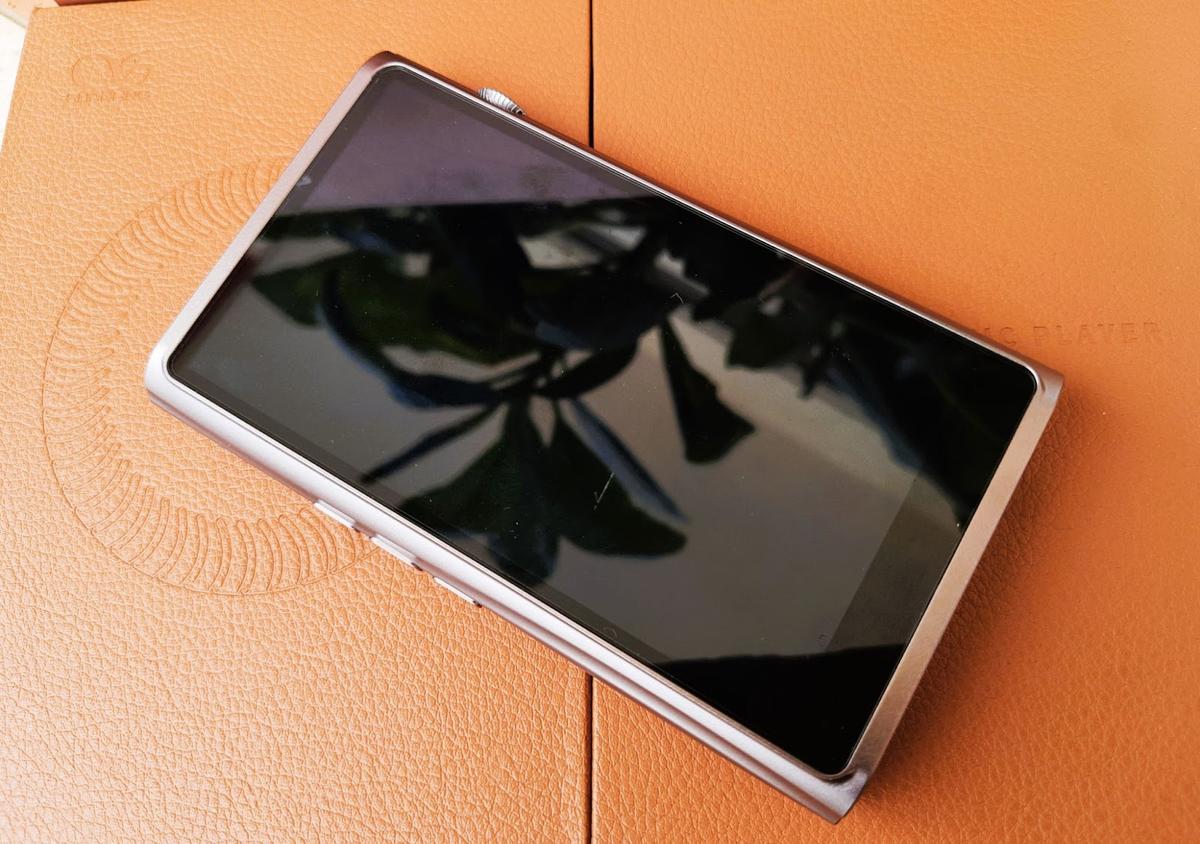
The m9 has dual Ak4499 in them, not ES9038pro.